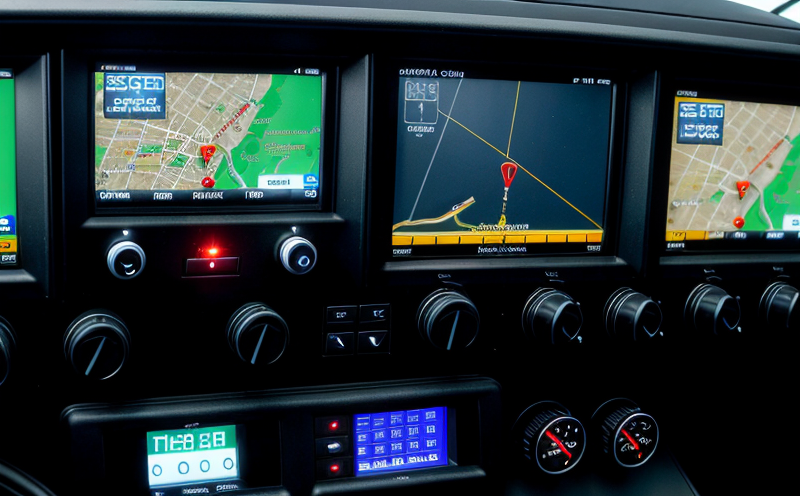IEC 60068-2-14 Thermal Shock Testing of Navigation Lighting
The IEC (International Electrotechnical Commission) standard IEC 60068-2-14 is a crucial document in the marine and ship equipment testing sector. This standard specifies methods for conducting thermal shock tests, which are essential to ensure that navigation lighting systems can withstand extreme temperature variations without failure.
The testing process involves subjecting specimens of navigation lighting to rapid changes between high and low temperatures, simulating real-world conditions at sea where these lights may be exposed to sudden environmental shifts. This ensures the reliability and durability of equipment under harsh marine climates.
For quality managers and compliance officers responsible for ensuring product integrity in this sector, understanding how IEC 60068-2-14 impacts design specifications is critical. By adhering to these standards, manufacturers can demonstrate their commitment to producing robust products that meet international requirements.
The thermal shock test is particularly important because it helps identify potential weaknesses within the materials used in manufacturing navigation lights. It also ensures that all components function correctly under extreme environmental conditions such as those encountered during maritime operations.
- Thermal cycling between temperatures ranging from -40°C to +125°C
- Duration of each cycle depends on specific requirements but typically lasts several hours
- Environmental chamber capable of maintaining precise temperature control
- Instrumentation that monitors specimen performance during testing
| Test Parameter | Description |
|---|---|
| Temperature Range | -40°C to +125°C |
| Cycle Duration | Varies based on specimen type and manufacturer specifications. |
| Environmental Chamber Capacity | Varies depending upon facility size. |
| Instrumentation Accuracy | Precisely calibrated to ±0.5°C for accurate temperature measurement. |
The process starts with thorough preparation of the navigation lighting specimens, ensuring they are free from any defects that could affect test results. Once prepared, these lights undergo rigorous thermal shock cycles in a controlled environment. The goal is to replicate real-world scenarios where temperatures fluctuate rapidly due to changes in atmospheric conditions.
After completing all required tests, detailed reports are generated containing information about the specimen's performance throughout each cycle. These reports serve as valuable resources for quality assurance teams who can use them to make informed decisions regarding product improvements or modifications needed based on test outcomes.
By following IEC 60068-2-14 guidelines, manufacturers not only enhance their products' reliability but also comply with international regulations. This ensures that navigation lights are safe and effective in challenging marine environments, thereby protecting both crew members and passengers aboard ships.
Quality and Reliability Assurance
- Detailed documentation of test procedures
- Data analysis to identify trends or issues within the data set
- Continuous improvement initiatives based on test results
| Test Criteria | Description |
|---|---|
| Luminous Intensity Stability | The light emitted should remain consistent after exposure to thermal shock. |
| Color Maintenance | Ensure that the color of the navigation light does not change significantly during testing. |
| Electrical Integrity | Voltage and current levels must be maintained within acceptable ranges throughout the test cycles. |
| Mechanical Durability | The mechanical structure should withstand repeated thermal cycling without damage or degradation. |
Quality assurance in this context involves not only performing the tests according to IEC 60068-2-14 but also implementing rigorous post-test evaluations. This includes reviewing data from each cycle, identifying any anomalies, and addressing them promptly through corrective actions. Continuous improvement efforts ensure that future batches of navigation lights are even more reliable than previous versions.
By adhering to these strict quality control measures, laboratories like ours provide peace of mind to our clients, knowing their products will perform reliably under all conditions encountered at sea.
International Acceptance and Recognition
The IEC 60068-2-14 standard enjoys widespread recognition among maritime organizations globally. Its acceptance is crucial because it sets a benchmark for the performance of navigation lighting systems across various countries and regions.
Countries like Australia, New Zealand, Europe (including UK), and many others require adherence to this standard when certifying marine equipment. This ensures that all products meet the same stringent requirements regardless of origin or destination port. The international nature of these standards supports seamless trade between different nations while promoting higher quality across the industry.
Recognizing the importance of consistent testing protocols, regulatory bodies often cite IEC 60068-2-14 as a key requirement in their certification processes for navigation lights. This helps maintain uniformity and trust within the marine industry.
Use Cases and Application Examples
- Navigation lamps used on yachts
- Sextant lights aboard research vessels
- Gyrocompass indicators for cargo ships
| Test Specimen | Description |
|---|---|
| Nautical lamps | Light sources designed specifically for maritime use. |
| Sextant lights | Fixed-position navigation aids used by sailors. |
| Gyrocompass indicators | Visual displays indicating the ship's orientation relative to magnetic north. |
| Signal flares | Cylindrical devices intended for emergency signaling between vessels or aircraft. |
The application of IEC 60068-2-14 goes beyond simple compliance; it plays a vital role in ensuring the safety and efficiency of maritime navigation. For instance, consider a scenario where a yacht owner purchases new navigation lamps for their vessel. To ensure these lights meet international standards, they would need to undergo thermal shock testing according to IEC 60068-2-14.
In another example, research vessels equipped with sextant lights rely heavily on consistent performance during long voyages across diverse climates. By subjecting these lights to thermal shock tests as per the specified criteria, researchers can have confidence that their equipment will operate reliably even in extreme weather conditions.





